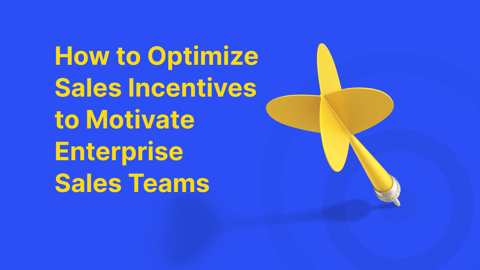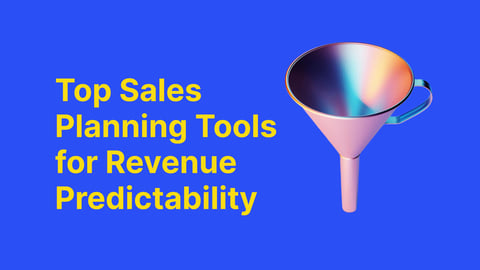‘If you aren’t measuring, you aren’t managing’ is a well-known adage from every business school. Measuring inputs, activities, and outputs is a classic way of ensuring that the right people are focused on the right things at the right time, helping a business achieve its goals.
While some say that some judgment will need to be applied alongside the numbers on a management dashboard, there’s little debate that numbers matter. The question for any manager is, which are the right numbers to look at? After all, there’s no shortage of data in a modern business.
So, let’s explore some of the sale pipeline metrics you can use to help you better achieve your business objectives and how technology can help you work smarter to get the results you’re looking for.
- What are the Right Sales Metrics for You?
- Essential Sales Metrics
- Leveraging Technology to Support Your Sales Analytics
What are the Right Sales Metrics for You?
There are no hard and fast rules for selecting the best metrics. You’ll undoubtedly have preferences, but others will likely add value to your business too.
Enterprise sales teams will be interested in the volume of leads coming through and the time it takes for opportunities to move through the pipeline.
For product-led sales models, leads and pipeline volumes still matter. Still, you’ll likely be as interested in response rates to marketing activities, including whitepaper download rates, webinar sign-up rates, and how well all this activity converts into opportunities. Consider anything that’ll help you fill your sales pipeline when your prospects typically don’t engage with your sales team directly.
For FMCG or white goods manufacturers, you’ll be interested in responses to marketing activities, like TV or online advertising, and units moving off the shelf in retail stores.
Some Essential Sales Metrics
Let’s look at several different metrics so you can determine the ones that’ll be useful for you:
1. Qualified Leads to Sales Ratio
Attracting the most relevant and best-quality leads to your business makes sense, and a good sales rep should understand how to convert potential information into a customer. We recommend the qualified leads to sales ratio to measure a rep’s performance and conversion rate.
Another way to use this is to compare the ratio of leads to sales-qualified negotiations between sales reps. You’ll be able to identify who needs more training and support, who performs exceptionally well, and who can perhaps mentor fellow workers. You can use data analytics to get a clear picture of the number of leads your sales team needs if they’re to be successful, as well as get a perspective on the quality of leads being passed over to them.
2. Deal Size
Identifying which customers are best suited to your products always makes good business sense, as does understanding how a product’s pricing model, performance, and benefits create value for prospects. This becomes much simpler when you apply a deal size metric, which gives you a good sense of how and where your sales team engages most effectively.
You can also use the deal size metric in territory management. By better understanding who your customers are, where they’re located, and what sectors they’re in, you can better assign the correct number and type of salespeople to an area.
3. Sales Cycle Length
Time is money. If you can shave months, weeks, or even hours off your sales cycle, that money goes straight to the bottom line. That isn’t to say you should rush the sales process; that would likely alienate your prospects and customers. But if you can find a way of giving your customer what they want in less time, then you’re likely onto a winning strategy for you both.
The length of sales cycles will vary between products and between sales reps. Still, you should be able to find details of enough individual sales campaigns in your CRM platform to reasonably assess how your sales team engages with your prospects.
Use this metric to see how your various products and services compare and how your salespeople compare to find the right combination of business development activities, territory management, and sales skills your business needs to grow.
4. Sales Phase Length
Another metric you can consider is the length of the sales cycle’s phases. This is critical during enterprise sales campaigns, which can take many months but be of significant value. It’s also helpful in better understanding the sales processes of products and services with lower price points, lower average deal values, and shorter sales cycles.
While converting a lead to an opportunity can be swift in any sales situation, taking it to the next qualification stage can be more challenging as an account manager tries to determine who is involved in the customer’s decision-making process. This helps them fully understand the business issues they must address to win out. Depending on the size and scale of the opportunity, this phase can be the most complex because the prospect may need help understanding who is involved in the process too.
This can slow the sales process, delaying the solution presentation, demonstration, and negotiation stage. Whether this takes weeks in smaller deals or months in enterprise deals, finding out where the choke points are in this process can save a company significant time and money. What’s the best approach in this situation? Is engaging via your business partners a better approach? What characteristics of salespeople are most effective in these situations? Is it better to sell your capabilities in smaller ‘chunks’ that are easier to move through a customer’s approval processes?
Use your sales data analytics to ‘open the hood’ of your sales process and identify which parts are working well and which need more focus.
5. Average Profit Margin
Not all sales revenue is equal. Some transactions are more profitable than others, and a company looking to maximize profits will want to focus on deals that generate the most margin. Other companies will pursue a strategy of maximizing market share for a range of reasons so that they might focus less on this metric.
The classic question is, how do you define ‘profitable’? Does it just cover the cost of sales and marketing to close a deal? Or does it also cover the services needed to support the contract over its lifetime?
Use sales and marketing data analytics to understand your actual cost of sales and your customer lifetime value to understand where to invest your business’s scarce time and resources to maximum effect.
6. Pipeline Coverage
Managers can determine what the business needs its sales pipeline to produce based on the investment they’ve put into the business. However, working out the level of leads and opportunities needed to support a sales target can take time and effort, especially in large sales organizations with plenty of revenue lines.
While there are well-known ‘rules of thumb’ like having three times the sales pipeline as the sales target, it’s often less clear that the volume of sales leads and marketing leads is needed to drive the sales pipeline. Sometimes the definition of a marketing lead versus a sales lead is open to debate.
The smart move is to take your historical sales data, understand where your sales and marketing leads came from, and then track them through the conversion, qualification, demonstration, and closing phases. You can then understand the level of market engagement you need to be successful. It’s often far more than you ever thought necessary!
7. Churn Rates
Inevitably, as part of business life, some customers will choose to cease using your product or service. This is problematic, as it’s much cheaper to keep a customer (potentially up to a fifth cheaper) than to acquire a new one. This issue becomes even more challenging for companies that use subscription pricing models, which makes attracting customers easier but can also mean it’s easier for them to walk away when they wish.
Having visibility of churn rates helps companies understand their overall level of churn and their customer churn hotspots. Are customers leaving within a few weeks of signing up with you, or is the first anniversary a problem for you? These metrics might indicate a sales model that doesn’t align with your customers’ preferred buying behavior, and you may need to put incentives in place to help your customer get the most out of their investment.
8. Win Rates
As we’ve already touched on, there’s value in understanding the tempo and dynamic of your sales and marketing pipeline so you can see which sectors, demographics, and customer types are more likely to buy from you. You can apply win rate analytics to your sales and marketing data set to understand this in detail and objectively, so there’s no need for any guesswork.
This sales history data can show you which leads and opportunities will most likely convert based on your ultimate win rates. This can also help you understand which competitors you’re most successful at defeating. Identifying which you lose to most can also help you know what directions to push your product.
9. Sales Productivity Metrics
When performing sales analytics, there’s nothing to say that it must exclusively focus on the customer base and the broader market. You can apply the same tools and metrics to your internal sales process.
This idea isn’t new. Sales managers are familiar with CRM platforms to monitor pipeline and quota achievement levels per salesperson. However, powerful sales data analytics platforms help you dive deep into your data to see embedded trends that can give insight into who is the most productive and why. You can use these metrics to develop training programs and training initiatives.
There’s likely no salesperson who is an expert at every stage of the sales process. Some’ll be better at closing, with others being better at opportunity development and qualification. Use data insights to determine who is best at each stage and why.
Leveraging Technology to Support Your Sales Analytics
The scale and scope of data that sales and marketing managers can use – from CRM platforms, eCommerce systems, finance systems, and industry data – gives them potentially unparalleled insights into their end-to-end sales and marketing process.
But it’s easy to be overwhelmed without having the right technology capabilities. Modern SaaS-based sales analytics platforms can capture and consolidate large volumes of sales and marketing-related data in one place. Use AI capabilities and your sales and marketing teams to dive deep into this data to understand and master the trends and dynamics of the end-to-end business development process.
Designed for non-technical users, these toolsets help with issues like data integration, data analytics, modeling, and report creation at the click of a mouse.
These data analytics tools help companies sift all their data to provide information about a range of market dynamics that can be distilled into a range of sales metrics that give you a holistic view of your sales process.
For more information on how using a range of sales metrics can help you achieve predictable and profitable revenue growth, download our eBook.




